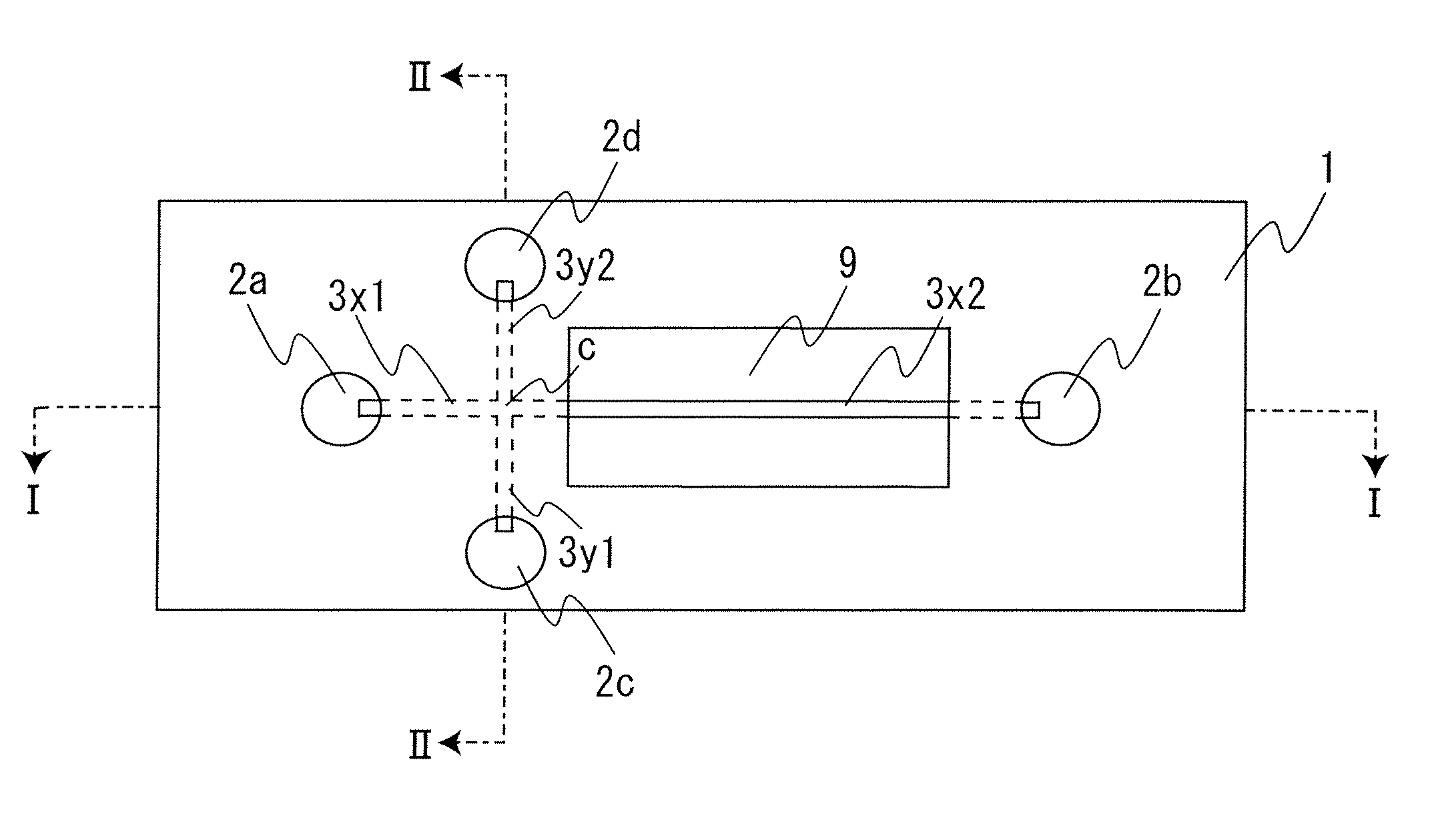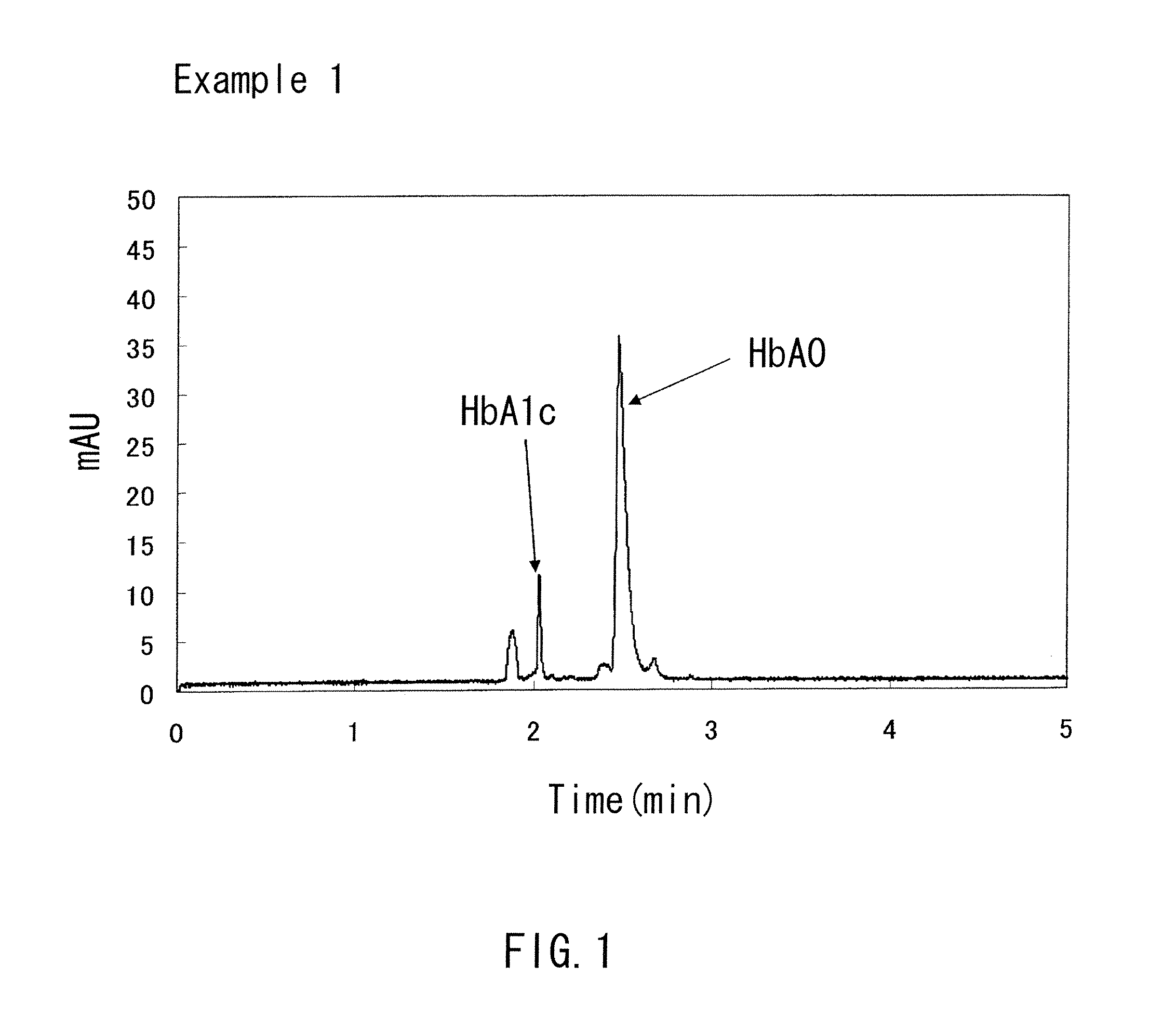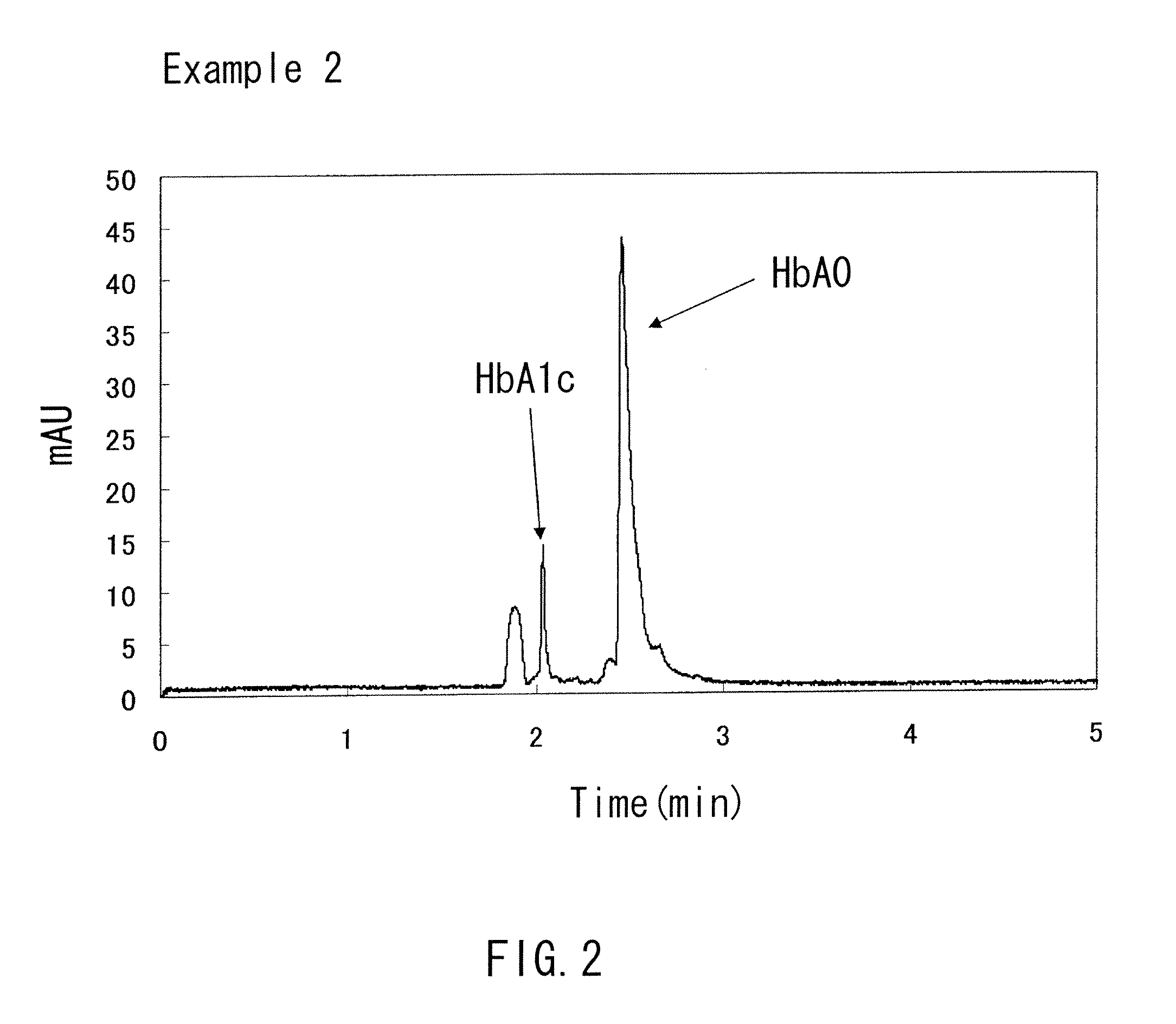Process for analyzing sample by capillary electrophoresis method
- Summary
- Abstract
- Description
- Claims
- Application Information
AI Technical Summary
Benefits of technology
Problems solved by technology
Method used
Image
Examples
example 1
[0077]A capillary channel (with an overall length of 32 cm, an effective length of 8.5 cm, and an inner diameter of 50 μm) made of fused silica was prepared. An aqueous sodium hydroxide (1 mol / L) was passed through this capillary channel at a pressure of 0.1 MPa (1000 mbar) for 10 minutes. Subsequently; distilled water was passed through this capillary channel at the same pressure as described above for 20 minutes to wash it. Then, a polydiallyldimethylammoniumchloride solution (10 wt %) was passed through the capillary channel at the same pressure as described above for 30 minutes. Subsequently, distilled water was passed through the capillary channel at the same pressure as described above for 20 minutes to form the A layer made of polydiallyldimethylammoniumchloride on the inner wall of the capillary channel. Then, a running buffer (pH 5.5) was prepared that contains chondroitin sulfate added to 100 mM malic acid and an arginine acid aqueous solution at a ratio of 0.5 wt %. This ...
example 2
[0078]A capillary channel (with an overall length of 32 cm, an effective length of 8.5 cm, and an inner diameter of 50 μm) made of fused silica was prepared. The capillary channel had an A layer formed with a silylation agent having an amino group that was fixed to the inner wall thereof by a covalent bond. Distilled water was passed through this capillary channel at a pressure of 0.1 MPa (1000 mbar) for 20 minutes to wash it. Then, a running buffer (pH 5.5) was prepared that contains chondroitin sulfate added to 100 mM malic acid and an arginine acid aqueous solution at a ratio of 0.5 wt %. This running buffer was passed through the capillary channel at the same pressure as described above, and thereby the B layer was formed on the A layer. With the capillary channel being filled with the running buffer, a sample containing hemoglobin dissolved in distilled water was injected into the capillary channel. Thereafter, a voltage of 10 kV was applied across both ends of the capillary ch...
example 3
[0079]A capillary channel (with an overall length of 32 cm, an effective length of 8.5 cm, and an inner diameter of 50 μm) made of fused silica was prepared. The capillary channel had an A layer formed with a silylation agent having an amino group that was fixed to the inner wall thereof by a covalent bond. Distilled water was passed through this capillary channel at a pressure of 0.1 MPa (1000 mbar) for 20 minutes to wash it. Then, a running buffer (pH 5.5) was prepared that contains sodium alginate added to 100 mM malic acid and an arginine acid aqueous solution at a ratio of 0.8 wt %. This running buffer was passed through the capillary channel at the same pressure as described above, and thereby the B layer is formed on the A layer. With the capillary channel being filled with the running buffer, a sample containing hemoglobin dissolved in distilled water was injected into the capillary channel. Thereafter, a voltage of 10 kV was applied across both ends of the capillary channel...
PUM
| Property | Measurement | Unit |
|---|---|---|
| Width | aaaaa | aaaaa |
| Width | aaaaa | aaaaa |
| Width | aaaaa | aaaaa |
Abstract
Description
Claims
Application Information
 Login to View More
Login to View More - R&D
- Intellectual Property
- Life Sciences
- Materials
- Tech Scout
- Unparalleled Data Quality
- Higher Quality Content
- 60% Fewer Hallucinations
Browse by: Latest US Patents, China's latest patents, Technical Efficacy Thesaurus, Application Domain, Technology Topic, Popular Technical Reports.
© 2025 PatSnap. All rights reserved.Legal|Privacy policy|Modern Slavery Act Transparency Statement|Sitemap|About US| Contact US: help@patsnap.com



